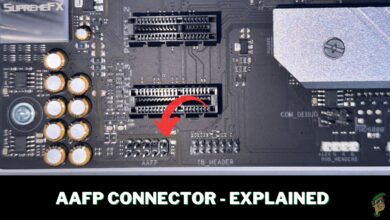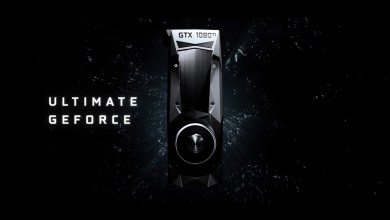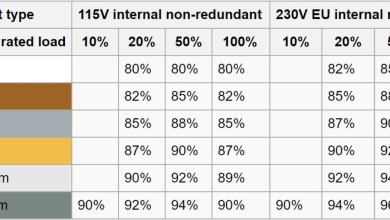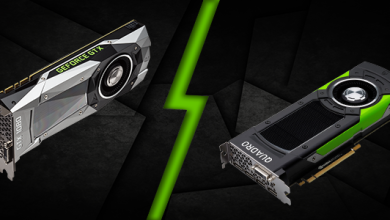Are NVMe PCIe M.2 Drives Compatiable with Macs?
Apple’s largely successful Mac lineup has always been respected for having great design, build quality and performance for the most part (unless you’re a gamer, sorry). While all of that is great for people who have grown to love MacOS, there still stands the one thing Apple is notoriously known for all over the world. You buy premium stuff, you pay a premium price. Often times, that premium you pay can be frustrating. Now we are not Apple haters here, surely Apple is doing something right when their Mac lineup sells so well. It’s a great option for working professionals who don’t mind the extra “Apple tax” because MacOS might make up for that.
Apple’s design objective for many years now has been to make their products look sleeker, simpler, thinner. In order to achieve that design aim, often times they have to sacrifice some things. Especially with their newer MacBook and iMac computers. To achieve that sleek profile they have in all their products these days, upgradability has been very limited. Apple clearly does not want you tinkering around in their systems.
NVMe M.2 Drives and Compatibility with Macs
 We have talked about NVMe M.2 drives before. We already know the speed upgrade they give over standard SATA drives. You might have heard all the fuss about the better reliability and speeds etc. Now you are thinking of upgrading your Mac with a higher capacity and higher performance M.2 NVMe drive. In most windows machines, that is a pretty simple task. Assuming the motherboard in your desktop or laptop has an M.2 slot and supports NVMe, upgrading is simple as just placing the drive into the slot and screwing it in. With Mac, however, the process is nowhere near as easy.
We have talked about NVMe M.2 drives before. We already know the speed upgrade they give over standard SATA drives. You might have heard all the fuss about the better reliability and speeds etc. Now you are thinking of upgrading your Mac with a higher capacity and higher performance M.2 NVMe drive. In most windows machines, that is a pretty simple task. Assuming the motherboard in your desktop or laptop has an M.2 slot and supports NVMe, upgrading is simple as just placing the drive into the slot and screwing it in. With Mac, however, the process is nowhere near as easy.
There are a lot of factors that can complicate the process of upgrading the SSD of your MacBook with an NVMe M.2 drive. We’ll be going through all of the issues you might run into when upgrading your MacBook’s SSD.
What type of Mac do you own?
This is obviously the main thing to keep in mind when you decide to upgrade your machine. Macbooks might be easier to upgrade as in order to access them, you just have to open the screws from the bottom panel and remove the current hard drive installed. If you own a Mac mini, the process is a bit more difficult but still doable. The hardest device to upgrade in Apple’s current lineup is the iMac. There really isn’t an easy way to do this. As there is no traditional access to the motherboard in this. The only upgradable part of the iMac is the RAM. In order to access the SSD, you will have to buy a separate toolkit to pry the iMac open from the front. We do not recommend this if you are not a tech savvy person.
Proprietary Mac SSDs
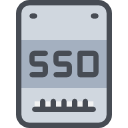 The iMac and MacBooks use apple own proprietary SSDs. While most of the time (especially on the newer models) the speed is quite impressive, you might want more storage. Instead of paying for Apple’s own proprietary SSD upgrade it might sound more appealing to go the cheaper NVMe M.2 route. That sounds easy and all but the SSDs used in the newer Mac computers are built specifically for the Mac. There is a size limit here which is different for every Mac of course. It’s quite possible that older machines will not even have the M.2 slot.
The iMac and MacBooks use apple own proprietary SSDs. While most of the time (especially on the newer models) the speed is quite impressive, you might want more storage. Instead of paying for Apple’s own proprietary SSD upgrade it might sound more appealing to go the cheaper NVMe M.2 route. That sounds easy and all but the SSDs used in the newer Mac computers are built specifically for the Mac. There is a size limit here which is different for every Mac of course. It’s quite possible that older machines will not even have the M.2 slot.
MacOS Limitations
 MacOS is designed and optimized specifically to work with Apple hardware. That is why Macs can deliver such great performance in nearly every situation (again, gaming is an exception). MacOS and Apple’s hardware is the perfect blend of great software working in tandem with great hardware. Sadly, upgradability is sacrificed for that. Older MacOS versions do not support NVMe at all so even if your Mac does have an M.2 drive it won’t work at all. However, testing has shown that MacOS High Sierra and upwards has added support for 3rd party NVMe M.2 drives. Mind you, there will still be the need of an adapter if your specific Mac model does not support the form factor of the drive you have picked.
MacOS is designed and optimized specifically to work with Apple hardware. That is why Macs can deliver such great performance in nearly every situation (again, gaming is an exception). MacOS and Apple’s hardware is the perfect blend of great software working in tandem with great hardware. Sadly, upgradability is sacrificed for that. Older MacOS versions do not support NVMe at all so even if your Mac does have an M.2 drive it won’t work at all. However, testing has shown that MacOS High Sierra and upwards has added support for 3rd party NVMe M.2 drives. Mind you, there will still be the need of an adapter if your specific Mac model does not support the form factor of the drive you have picked.
Final Thoughts
To put it in a nutshell, Mac does have support for NVMe drives these days and the overall confusion has gotten cleared up a bit. You will still need to find to find the right type of M.2 drive for your specific Mac model and make sure that your software is up to date. However, it is still not a relatively easy task and it’s not much cheaper than buying an external SSD or just buying a higher capacity Mac computer from the get-go. Our recommendation is that, if you have an older Mac and are running out of storage, it would be easier to just go with an external hard drive. We also firmly believe that the newer Macs have blazing fast SSDs and if speed is your concern you should put that to the side. Now, if you have an older Mac and want to give it a little bit of kick in performance, an M.2 NVMe drive upgrade is a good way to do so. It’s surely not easy but it is possible.
